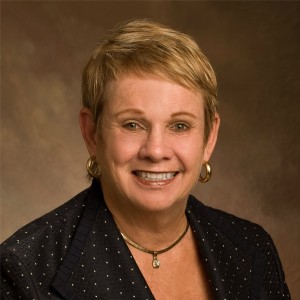 In mid-May I traveled from my home in Florida to Evanston Township High School, just north of Chicago, to meet with students, school social workers and law enforcement officials. My intention was to talk to them about my nine years of service as a juvenile judge and the stories of the kids in court I wrote about in my book, Raised by the Courts: One Judge’s Insight into Juvenile Justice.
In mid-May I traveled from my home in Florida to Evanston Township High School, just north of Chicago, to meet with students, school social workers and law enforcement officials. My intention was to talk to them about my nine years of service as a juvenile judge and the stories of the kids in court I wrote about in my book, Raised by the Courts: One Judge’s Insight into Juvenile Justice.
Boy, was I in for a surprise!
Instead of talking I was listening. Instead of teaching I was learning. Instead of being the center of attention, I was one person in a circle of 12. Instead of sharing my experiences with others, I listened while others shared some very personal and painful experiences with me. Instead of talking about guilt or innocence, crime and punishment, I found myself focused on the word “harm:” identifying the harm, acknowledging the harm and repairing the harm.
This was Restorative Justice Evanston: Restoring Justice … One Circle at a Time. Unquestionably, I learned something very new and powerful that morning I spent with Susan Trieschmann, of Restorative Justice Evanston; Arica Barton and Kathleen Gruber of the Evanston Police Department. I also learned from the high school students who made up the “peer jury,” Tatiana, Laurel, Michael and Jerry.
I learned about a diversion model that operated within the school, for school-based crimes, without the need for police or court involvement. Truly, this was a community — a school community — resolving its own problems in a manner that satisfied the victim, the offender and the school.
After coffee and donuts in a large meeting room, we arranged our chairs in a circle around a centerpiece of colorful talismans or tokens and a peace candle. Susan lit the candle while holding a colorful woven bookmark.
She explained the rules: Only the person holding the bookmark could talk. Everyone else would listen and not interrupt and the bookmark would be passed to the next person wanting to speak. Everything said in the peace circle was deemed confidential. No gossiping allowed! And, of course, cell phones were turned off.
Our leader asked three questions: What we liked most and least about ourselves, the city of Evanston, and our ability to create change. One by one, people who were complete strangers to me, some just teenagers, shared their hopes and dreams, their fears and frustrations, confident that the others were listening respectfully and without interrupting or passing judgment. (Remember that rule of confidentiality? I can’t tell you what was said.)
Next, the four peer jury teens gave us examples of how the peace circle concepts worked in resolving school-based crimes. Let’s say a student shoved his teacher against the desk, in an argument over a cell phone. If police intervene, this becomes battery on a school board employee, and in Florida that’s a felony. Instead, a peer jury of trained students is convened, the offender participates in a peace circle and then acknowledges the harm he caused. Did the teacher lose face in the classroom? Did other students get upset and distracted from learning? Was there an injury?
Once the harm is acknowledged, the offender and peer jurors discuss how to repair the harm. The offender makes suggestions, guided by the jurors. Of course, a letter of apology. Then, perhaps the offender could come to school early and help the teacher set up the classroom. Or, if he or she is flunking the class, maybe getting some tutoring would make him a more engaged student. A contract is written and if the student performs, no charges are filed.
The statistics are compelling. Evanston High School has a 97 percent success rate for completed peer jury agreements. The peer jury has helped avoid more than 300 suspensions in just two years.
This is not a substitute for police or court diversion models or for youth courts which convene after an arrest. The Evanston peer jury model operates at an earlier stage on true restorative justice principles: the community helps the offender recognize, acknowledge and repair the harm.
This very special peer jury in Evanston, Illinois, taught this seasoned judge a powerful lesson.

It is great that more youth, especially those of color, are being given an alternative. In Judge Sullivan’s words, this program “helps the offender recognize, acknowledge and repair the harm.” However, this approach defelcts attention from the root of the problem (i.e. poverty, untreated mental health issues, etc.) which remain unaddressed. Why do our youth (again, especially those of color) end up acting out in the first place? Could it be that they have problems at home due to economic or drug issues in their families, that they feel marginalized at school by a system that tracks them for failure (i.e. it is common knowledge that ETHS has a racial and class-based tracking system)? These are the issues that any true “justice” system should be addressing!
I have had the opportunity to sit on Restorative Justice panels in Evanston. Quite frankly. I was very impressed with this excellent program and I will continue my involvement with Evanston’s program. As a retired Police Officer, I have witnessed many youth become involved with the ‘system’ and the harm that it entails. Thank You Evanston for providing alternatives, and thank you Judge Sullivan.
What a great program, and how wonderful that teenagers can teach adults something if the adults just listen. Good of you to share your experience in Evanston with others.